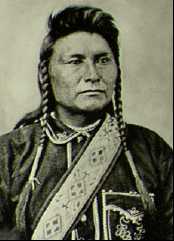“We Took Away Their Best Lands, Broke Treaties”: John Collier Promises to Reform Indian PolicyJohn Collier’s appointment as Commissioner of Indian Affairs by Franklin Roosevelt in 1933 marked a radical reversal—in intention if not always in effect—in U.S. government policies toward American Indians that dated back to the 1887 Dawes Act. An idealistic social worker, Collier first encountered Indian culture when he visited Taos, New Mexico, in 1920, and found among the Pueblos there what he called a “Red Atlantis”—a model of living that integrated the needs of the individual with the group and that maintained traditional values. As Commissioner, Collier proposed a sweeping set of reforms to reverse the previous half century of federal policy. Although he could not win congressional backing for his most radical proposals, the Indian Reorganization Act of 1934 dramatically changed policy by allowing tribal self-government and consolidating individual land allotments back into tribal hands. His 1938 report as Commissioner of Indian Affairs combined a frank indictment of the broken promises of the past with an insistence that the Indian Service, since 1933, had made a “concerted effort” to rectify those past mistakes.What Collier wrote:
In all our colorful American life there is no group around which there so steadfastly persists an aura compounded of glamor, suspicion, and romance as the Indian. For generations the Indian has been, and is today, the center of an amazing series of wonderings, fears, legends, hopes.
Yet those who have worked with Indians know that they are neither the cruel, warlike, irreligious savages imagined by some, nor are they the “fortunate children of nature’s bounty” described by tourists who see them for an hour at some glowing ceremonial. We find the Indians, in all the basic forces and forms of life, human beings like ourselves. The majority of them are very poor people living under severely simple conditions. We know them to be deeply religious. We know them to be possessed of all the powers, intelligence, and genius within the range of human endowment. Just as we yearn to live out our own lives in our own ways, so, too, do the Indians, in their ways.
For nearly 300 years white Americans, in our zeal to carve out a nation made to order, have dealt with the Indians on the erroneous, yet tragic, assumption that the Indians were a dying race—to be liquidated. We took away their best lands; broke treaties, promises; tossed them the most nearly worthless scraps of a continent that had once been wholly theirs. But we did not liquidate their spirit. The vital spark which kept them alive was hardy. So hardy, indeed, that we now face an astounding, heartening fact.Comment: Collier wrote this only 48 years after Wounded Knee. If he could see past the stereotypes, both positive and negative, what's our excuse? We've had another 72 years of Native-themed
books and
movies, Native leaders and thinkers, Native
museums and
monuments, etc. Yet the average American is totally ignorant compared to Collier.
For more historical documents, see
"A Savage People" in 1996 Encyclopedia and
1923 Letter to Indians.
Below: "Wow, he's really just like us? He looks so different, so strange, so...savage."



No comments:
Post a Comment